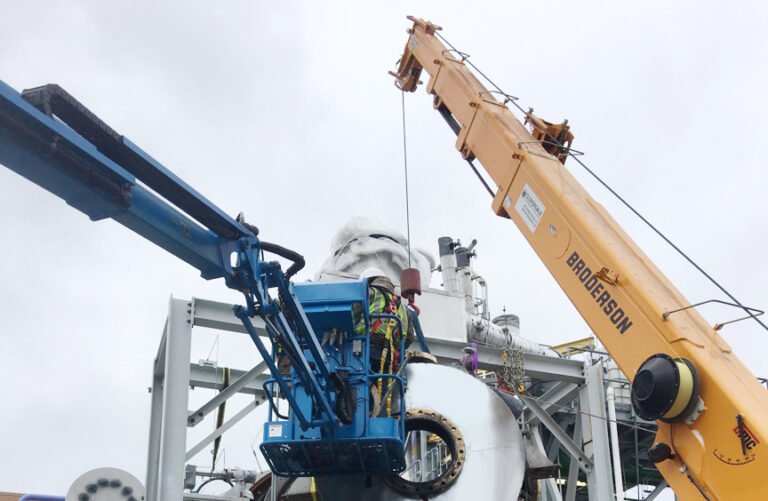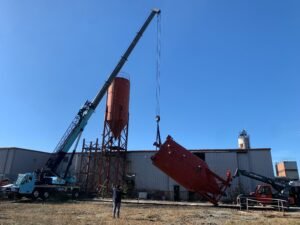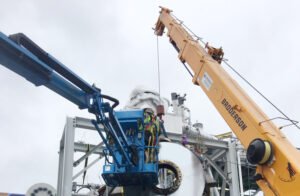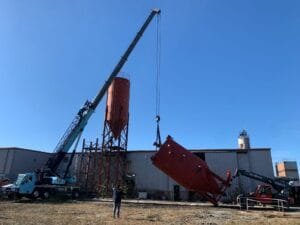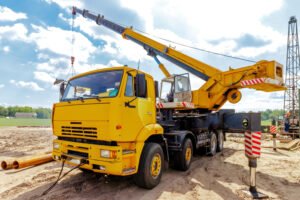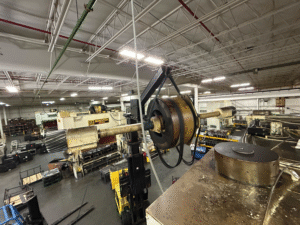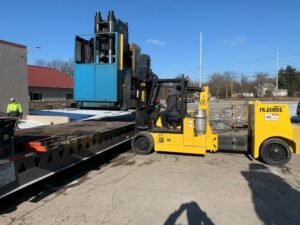When managing a construction or industrial project, one of the most significant logistical decisions is how to source heavy equipment—especially cranes. Two common options are renting a crane or leasing one for a longer duration. At first glance, both appear similar, but when you look at the numbers, logistics, and long-term needs, the cost-effectiveness of these options can vary greatly.
In this guide, we’ll explore the key differences between crane rental and leasing, including upfront costs, project duration considerations, ownership responsibilities, and operational implications. By the end, you’ll be able to confidently determine which method is more cost-effective for your specific project needs.
Crane on Rent — Flexibility, Speed, and Convenience
What is Crane Rental?
Crane rental refers to short-term equipment hire for a set project or duration. Rental agreements are often hourly, daily, or weekly, and may include an operator, fuel, insurance, and maintenance.
Key Advantages of Renting a Crane
- Lower Upfront Costs: When you rent a crane, you’re only paying for the time you use it. There are no massive capital investments or long-term liabilities.
- Maximum Flexibility: Crane rentals are ideal for companies that don’t frequently need lifting equipment. Whether you need a mobile crane for one day or a tower crane for a two-week lift, rentals allow you to scale up or down easily.
- Access to Latest Technology: Rental providers often maintain fleets of well-maintained, modern cranes, allowing you to benefit from updated safety features and advanced lift capabilities.
- Maintenance-Free Usage: One of the biggest operational perks of renting a crane is that maintenance and inspections are handled by the provider. This reduces operational downtime and liability.
- Operator Included (Optional): Some rental agreements include certified operators, ensuring safe and compliant operation without having to hire a dedicated in-house crane crew.
Cost Structure of Crane Rentals
-
Base rate: Charged hourly or daily
-
Fuel surcharge: Often included or billed separately
-
Operator fee: Sometimes included or extra
-
Mob/demob cost: Mobilization and demobilization charges
-
Insurance (optional): May be covered by provider or billed separately
When Is Renting a Crane Most Cost-Effective?
-
Short-term or urgent projects
-
One-off lifts or occasional use
-
Projects with fluctuating lift requirements
-
When in-house crane maintenance is not feasible
Leasing a Crane — Stability for Long-Term Projects
What is Crane Leasing?
Leasing typically involves a longer-term contract (monthly or yearly) and often does not include an operator. It’s similar to equipment financing: you make fixed payments for an extended period in exchange for exclusive use of the crane.
Key Advantages of Leasing a Crane
- Long-Term Cost Savings: While leasing requires a commitment, it becomes more cost-effective over time compared to daily or weekly rental rates.
- Predictable Budgeting: Leasing offers fixed monthly payments, making it easier to plan budgets for extended projects.
- Asset Utilization: You gain full control over crane usage. For long-duration, lift-intensive projects, this autonomy can improve workflow efficiency.
- Customization and Branding: Some lessors allow companies to brand leased cranes, giving a professional image on large project sites.
- Reduced Scheduling Hassles: With a leased crane, you eliminate the risk of availability issues that may occur when renting cranes on short notice.
Cost Structure of Crane Leasing
-
Monthly lease payments
-
Insurance and liability (handled by lessee)
-
Maintenance costs (shared or fully covered depending on contract)
-
Operator (in-house or separate hire)
-
Initial deposit or financing arrangement
When Is Leasing a Crane Most Cost-Effective?
-
Projects exceeding 6–12 months
-
When consistent lifting is required over a long period
-
Companies with trained in-house operators
-
When downtime risk from unavailability is too costly
Head-to-Head Comparison — Renting vs. Leasing
| Criteria | Crane on Rent | Crane Lease |
|---|---|---|
| Upfront Cost | Low | Moderate to High (deposit may apply) |
| Best For | Short-term projects | Long-term, consistent usage |
| Maintenance Responsibility | Provider | Shared or Lessee |
| Operator Availability | Often included | Must be hired separately |
| Flexibility | High | Medium |
| Availability Risk | May vary | Always available |
| Customization | Not available | Sometimes allowed |
| Budget Predictability | Variable | Fixed monthly |
| Asset Control | Limited | High |
| Break-Even Point | Short projects (under 3-6 months) | Projects over 6+ months |
Real-World Example
Suppose you’re managing a bridge construction project lasting 2 months with varying lift needs — a rental crane would be perfect here. But if you’re executing a year-long industrial plant installation requiring regular lifting, a leased crane becomes far more cost-effective.
Expert Tips to Choose the Right Option
Tip 1: Assess Project Duration First
As a rule of thumb:
-
Under 3 months: Rent
-
3–12 months: Analyze both options
-
12+ months: Lease is likely more economical
Tip 2: Consider In-House Capabilities
Do you have certified operators and maintenance resources? Leasing may work. If not, rental services that include operators and inspections are more practical.
Tip 3: Calculate Total Cost of Ownership (TCO)
Don’t just look at monthly or daily rates. Factor in:
-
Operator salaries (if needed)
-
Maintenance and insurance
-
Downtime due to availability or repairs
-
Transportation and mobilization costs
Tip 4: Prioritize Reliability and Uptime
Time is money. A reliable crane (whether rented or leased) with good maintenance support will always save more in the long run than a cheap one with frequent breakdowns.
Alltracon: Your Trusted Partner for Crane Rentals and Leasing
Whether you need a crane for a single-day lift or a long-term industrial project, Alltracon offers both crane rentals and crane leasing solutions tailored to your needs. With a modern fleet, certified operators, on-time delivery, and unmatched safety standards, Alltracon ensures your lift is handled with precision and care — every time.
Conclusion
Crane rental and crane leasing both have their place in the construction, industrial, and heavy transport industries. Choosing the right option boils down to evaluating your project’s timeline, frequency of crane usage, available internal resources, and budget flexibility.
-
Renting offers low-commitment flexibility ideal for short-term or occasional projects.
-
Leasing provides stability and cost efficiency for longer, consistent, lift-heavy operations.
By aligning your equipment strategy with your project goals, you ensure productivity, minimize risk, and optimize cost.
For those seeking reliability, affordability, and industry expertise — Alltracon stands ready to deliver top-tier crane rental and leasing services across the Midwest and beyond.
